Please help me 'refinish' my dining room table
I'll try to keep it brief:
Inherited nice cherry dining room table w/3 leaves - goes from 18" wide to a large 10-seater if needed. Very versatile in that respect, however, the finish is a nightmare. Its old, gummy, shows water drips, cup rings turn white, kid left a wet towel on top once, the texture of the towel is still on the table. I want to give this table a finish that will be durable, waterproof, something I can scrub the day off at the end of the day after homework, dinner, backpacks sliding on and off, etc. (We are a family of 5)
I've considered plexiglass top, expensive table pad, assortment of tablecloths (I hate tablecloths!) even thought about buying a whole new table and put this one in storage... but I'd really like to use this inherited family piece.
What is the best way to go about refinishing or restoring this? I've done a fair amount of research, and I am not sure if I need to sand down through ALL the finish to the raw wood and start over. Or, is it possible to sand through just the clear coat that is on top, through the cup rings, textures of former "accidents" and just get down to the original stain and then put a new clear over that.
Should I use varnish, or poly, or both?
Thanks for reading - I can answer more questions if needed.
Also - I am on a budget, so handing it over to a pro is not possible (although tempting!)
Comments (33)
User
12 years agolast modified: 9 years agoThere really is no way to look through a computer to see what the condition of the finish is or if any of the disfigurements are just in the present finish or deeper.
So, basically, you need to determine the kind of finish that is there. It sounds like the finish might be lacquer. The way to find out is to get some lacquer thinner and wipe a bit on the top. I'd do it in the area where the towle imprint is. Use a cotton cloth and wet a spot on the cloth and rub lightly. If the nubs soften or disappear, the finish is lacquer. You might be able to remove most or even all of the problem areas that way, since lacquer thinner dissolves even old hard lacquer and new lacquer dissolves a bit of a previous coat as it is applied.CAUTION! Lacquer and lacquer thinner are not safely used in a closed room such as a dining room without a protective filter mask capable of removing fumes.
Or the finish may be varnish, in which case you will have to strip or sand out the defects. You can use a stripper to get the gummy layer off, let the table top dry completely---24-48 hours and sand with 150 grit paper in a random orbit sander to even out the remaining finish, then sand again with 220 grit. Then apply a better varnish like the kind Sherwin Williams sells.
In the rare possibility the finish is shellac, use denatured alcohol in the same manner as the lacquer thinner.
Related Professionals
Kaneohe Cabinets & Cabinetry · Murray Cabinets & Cabinetry · Salisbury Cabinets & Cabinetry · Milford Mill Cabinets & Cabinetry · Burlington Flooring Contractors · Elkridge Flooring Contractors · Elmhurst Flooring Contractors · South Plainfield Flooring Contractors · St. Louis Flooring Contractors · Tampa Flooring Contractors · West Haven Flooring Contractors · Carlisle Furniture & Accessories · San Diego Furniture & Accessories · Toledo Furniture & Accessories · Holliston Furniture & Accessoriesbrickeyee
12 years agolast modified: 9 years ago"Its old, gummy, shows water drips, cup rings turn white, kid left a wet towel on top once, the texture of the towel is still on the table."
That sure sounds like a very old shellac finish with a lot of crud built up.
Sanding is about the hardest way to remove a finish.
If the table has a solid wood top and is NOT veneered you can use a power sander more safely, but using the correct stripper for the finish is still better.
RRM1
12 years agolast modified: 9 years agoLet me just give you the basics for sanding. There are two parts to sanding Leveling and finishing.
Excavation and leveling fall into the same category for your situation. Your into the excavation at the moment and need to completely remove the previous finish and in the process create a level surface to finish. You can do it by hand or with a machine. By hand, I mean using a sanding block. (Cork, rubber, wood, etc.) Hand sanding with just paper (no block) can create grooves and uneven surfaces because the pressure from fingers and palm is not even, and the wood is not the same hardness everywhere. You can use a machine you just need to be careful. Mistakes with a machine are more serious than ones made by hand. If you use a machine, try 100 grit first to see if it is adequate in removing the finish and leveling the work. If you're burning through paper, go to 80. Remember 80 makes bigger scratches.You should look at sanding as creating a scratch pattern by using an abrasive. Once level, each step in the process should be to create a uniform pattern of scratches sanding with the grain. Sanding with the grain just makes the scratches stand out less. Once a uniform scratch pattern is achieved, you go to the next finer grit. Here, you will create a new scratch pattern which completely removes evidence of the previous scratch pattern.
With most refinishing projects, sanding to 150 or 180 is sufficient for the application of stain, sealer, and topcoat(s).[With certain wood species scratching may still be visible through the stain and topcoat. For these it may be necessary to go to 220, but this is rare.] Where most people make their mistake is jumping grits and leaving scratches from coarser steps and not removing all of the previous pattern. "Feeling smooth" is not an indicator of whether the surface is properly prepared. Your eyes are. The best way for your eyes to see the work is to have the light source (a fairly bright one) pointing toward you on the work at an oblique angle.
Here is an important note. Cherry is not easy to stain without it becoming blotchy. There are several remedies for this problem, but take it slowly and don't proceed without testing different methods and materials. Choice of the type of stain is very important. There are dye stains, pigment stains and stains that combine both. [Although it won't be something you can do as a DIYer, spraying on a diluted NGR stain with a volatile solvent can almost eliminate blotching on cherry.] Look on this blog for discussions of staining techniques and stain properties.
Richardhomestylelisa
Original Author12 years agolast modified: 9 years agoUpdate:
Continued sanding by hand today after a failed attempt to use a vibrating electric sander. I am still working towards removing all old stain and getting down to pure cherrywood. I have completed two whole leaves and am proud to say they are down to cherrywood with all old finish and old stain removed!
I am using 100 grit paper over a block, and over a foam block, and sometimes I use a fingertip if I am in a tight spot that needs fine pressure. I plan on then moving to 120, 180, then 220. All by hand. I have decided not to use a liquid stripper as now I have done 1/6 of the table and I don't want to see any differences due to using two different techniques (liquid stripper vs 100% hand sanded)
Regarding cherry being blotchy - it was mentioned that there are remedies for this - what are they? A blog was mentioned - but which blog?
I do feel a little bit nervous about acheiving a nice smooth finish prior to staining by only hand sanding. Does my method sound like it will get me there? (hand sanding, going up in sandpaper grade until I reach 220?)
Is there anyway to test for scratches/smoothness BEFORE you apply stain?
homestylelisa
Original Author12 years agolast modified: 9 years agoThank you RRMi and Brickeeye for your advice and posts.
RRM1
12 years agolast modified: 9 years agoIn my post I said to get a light source that shines toward you on the other side of the work. If it is bright enough you will see all of the scratch patterns quite easily.
For blotchiness, you can use a 'conditioner', they're sold as such. Or you can use a dilute 'cut' of shellac. How do you want to stain it? You'll need to decide on a color and to do that will take a little more work. This will involve sanding the under side of the leaves. This will be your test area. Once sanded, get some samples of some stains and apply some stain to a small portion on the under side of the leaf. Remember you can build the color using a diluted stain, but you can't go backwards from a concentrated one. [I prefer dye stains, but you will, most likely, need to find a woodworker's supply, a hardwood lumber supply, or a professional paint and finish store to purchase them. Personally, I like Mohawk NGR (Non Grain Raising) stains, but there are many many others.] You may have to settle for more consumer oriented stains which are combinations of dyes and pigments. Just test each sample first before applying it to the finish side. Ideally put some top coat over the test area for a better representation of what it will finally look like. Sometimes the finish will change the way the stain will look. Don't be too concerned about blotching, remember this is your first project. Just take your time, most major ugliness comes from hurrying and making dumb mistakes. Your technique will get better. Just enjoy the process and you'll get better - like we all have. I actually like hand sanding some things, like beautiful woods, especially rubbing out finishes. I've attached product website that discusses a number of aspects about finishing. If you have more questions, just ask.
-RichardHere is a link that might be useful: Rubbing Out Finishes
homestylelisa
Original Author12 years agolast modified: 9 years agoThank you, Richard and everyone for your advice- I am reading and rereading with great interest.
I am still hand sanding away - have two leaves left to go. Underneath this dark old stain is a beautiful cherrywood table that I am now finding myself feeling very regretful over the thoughts of covering it up again with more dark stain! (the previous stain on it was so dark brown you could hardly see the grain)
So my new question is not so technical:
What would happen if I chose to stain it quite a few shades lighter than the traditional dark cherry stain that is commonly seen in furniture stores? I've been looking around, and why is it that most cherry furniture is such boring, dull, dark brown color with no grain showing?
I'd love to see this table top that is now pinkish with lovely grain go just a couple shades darker with a subtle red tone - I don't plan on sanding the legs because they are fine, so the legs would be darker.
There must a be a reason this is not desirable because I've never seen it done. Can anyone explain this? I do understand that they say cherry will darken with time. I still don't understand why cherry is always stained so dark so as not to just watch and enjoy the natural aging process of the wood. :/
So go ahead and tell me all the reasons I am being naive. :)
lazy_gardens
12 years agolast modified: 9 years agoWhat would happen if I chose to stain it quite a few shades lighter than the traditional dark cherry stain that is commonly seen in furniture stores?
Try just a clear sealant and let it darken.
If you use stain, you can control the coverage by wiping off more or less of the stain as you apply it. Then use a clear finish on the top for protection.
why is it that most cherry furniture is such boring, dull, dark brown color with no grain showing Because most of it is not cherry wood, it is "cherry finish" over something else. By using the dark opaque stain they eliminate having to match wood grain.
bobismyuncle
12 years agolast modified: 9 years agoSanding is an extremely poor way to strip a finish. In about an hour with a stripper, you could have had it clean and nearly ready to so.
Sanding takes a lot of time -- you've found this out. It also gums up a lot of sandpaper.
Sanding risks sanding through a veneer. This is a giant oopsie.
Sanding does not effectively remove the old finish uniformly. You may not find this out until you attempt to stain.
At this point, I suggest you put away the sandpaper and do a proper stripping, including what you have already sanded. Unless there is a lot of damage, all you need is a light sanding with 220 sandpaper to remove the fuzzies.
RRM1
12 years agolast modified: 9 years agoDon't stain it, then. (That would be my choice) Apply a coat of oil to highlight the wood and give it a little pop. You'll have to let it cure for a week or two, Then clearcoat it. Use a few coats and then try rubbing it out. Remember to use a gloss finish and look at the ones Jeff recommends. This is where you'll find the "handwork" really pays off. Cherry darkens on its own in sunlight. Have you determined that the top is veneered or is it solid. If it IS veneer, Bob's, right you need to be VERY careful to not sand through. It's hard to believe with all the work you've done you haven't sanded through already (If it's veneer).
homestylelisa
Original Author12 years agolast modified: 9 years agoIts not veneer. It is solid cherry. That I know for certain. Sanding may be a "poor" choice, but it worked. I've read a few sources that claim that hand sanding is preferred over machine sanding OR chemical strippers for various reasons. I suppose this is one of those things where there is just a matter of opinion. (Except undebatable technical issues such as the veneer example, of course) Ah, no matter - Its all done! Finished yesterday. Excited to try some different stains.
karinl
12 years agolast modified: 9 years agoI disagree with using a gloss finish. If you love the wood, you can see it best with a matte finish; no glare. On a set of drawers we made for the kitchen, we used Fine Paints of Europe clear urethane with a matte finish. Warning, it majorly stinks in use and for a while afterward, but it was the only matte finish clear coat I could find. But it is perfect appearance-wise, you can barely tell they are finished at all.
As for how to strip, Bob's is right to a large extent, but what I think people with workshops often forget is that when you don't have a workshop, there are some constraints on what you can do. For example, I strip a lot of wood chemically and with heat (IR), but I work outside, so can only do it on dry, relatively warm but not hot, and windless days. That means I can only do it in spring or fall. Or if your workspace is, say, a porch with a painted surface, as one of mine is, chemical stripping is not something you can do there without risking marital discord.
If I had your table I think I would also keep it clear and light.
Karin L
RRM1
12 years agolast modified: 9 years agoThe reason to use a gloss finish is that they are generally harder and clearer. Jeff Jewitt's article on rubbing out finishes (above) should cover it, if not, Check out some of Bob Flexner's articles.
raymondtwp
12 years agolast modified: 9 years agoIt sounds like you want to keep the integrity of the wood while having a functioning, waterproof surface. I Highly recommend using Waterlox Tung Oil (specifically, use a 50/50 mix of Waterlox Satin Finish and Waterlox Sealer/Finish).
This finish is naturally waterproof and literally penetrates the wood fibers, so it does not sit on the surface. If you use a clear coat that sits on the surface, like people have said before me, you will have a hard time ever correcting damage. With a finish that penetrates the surface like the Waterlox, if you ever get a ding or a mark, the problem area will Still be waterproof and protected (because the oil has penetrated the wood entirely) so you won't get rotting etc.
The reason the "white rings" you mentioned happen, are because you had a finish that sat on the surface of the wood. That allows for condensation to develop between the top of the wood and the bottom of the clear coat and makes a white ring.
I bought a solid American Cherry Serious DIY countertop from this company (Craft Art) for a job I was doing recently and used this finishing method on it (see link below) and I ended up putting in an undermount sink. It's waterproof and food stain proof enough for putting an undermount sink in, so it will be completely ok for your table - towels left on it and all! : )
The finishing instructions I followed are below. They were really nice when I called for advice too. www.craft-art.com is their website. Click on the link to their online store that says "DIY Homeowner wood tops" and you can get all their finishing instructions. I put a direct link to the finishing instructions below too... I think. Hope this works..
good luck.
Here is a link that might be useful: Craft Art DIY finishing instructions with waterlox waterproof penetrating finish
homestylelisa
Original Author12 years agolast modified: 9 years agoUpdate and questions:
I am now sanding with 220 grit paper, and hoping to move onto stain next. After I've sanded with the 220, I planned on dusting the table, in between leaves, legs, etc. Then, wiping down with Mineral Spirits. Waiting one day, then proceeding to stain.
My questions are:
What grit sandpaper do I use in between coats of stain, and then coats of varnish?
Also, would one layer of poly ON TOP of the varnish be of any benefit (for added waterproof, durability, and washable-ness?) or would that be overkill?
Lastly, I am concerned about the dust in my working environment. I've been working on this table in my garage. Once I wipe it down with the mineral spirits, do I have to be in a totally dust free environment to move onto staining? or, will the sanding in between coats eliminate any concern for lingering dust?
TIA
bobismyuncle
12 years agolast modified: 9 years agoMy questions are:
What grit sandpaper do I use in between coats of stain [A: NONE]
, and then coats of varnish? (A: CAMI 320 or P400]Also, would one layer of poly ON TOP of the varnish be of any benefit (for added waterproof, durability, and washable-ness?) or would that be overkill?
[A: Don't understand. Poly is varnish.]Lastly, I am concerned about the dust in my working environment. I've been working on this table in my garage. Once I wipe it down with the mineral spirits, do I have to be in a totally dust free environment to move onto staining? or, will the sanding in between coats eliminate any concern for lingering dust?
[A: Any dust (or hair, insects, vegetation, etc.) lingering in the air is liable to land into uncured varnish and cause a defect.]
And Waterlox is NOT TUNG OIL. It is a varnish made from Tung Oil. It's chemically altered during the varnish-making process.bobismyuncle
12 years agolast modified: 9 years agoWhile you have to read carefully and sift the the marketing chaff, the definition of varnish is resin + oil heated.
"PERFORMANCE HIGHLIGHTS
By definition, a varnish, with a few exceptions, contains resins as essential constituents. Further, varnishes
dry by the evaporation of its volatile constituents, by the oxidation or chemical reaction of other constituents
or partly by both. We view our Waterlox Original Tung oil finishes as 'phenolic modified Tung oil-based
varnishes'. By design, our original formulas are low solids solutions (high solvent percentages), engineered
to offer the most desirable combination of wood penetration and protective film build. The solids portion of
our finishes is made up of 85% Tung oil and 15% resin, rosin and driers. While many make untrue product
claims, Waterlox has never made any claims that we manufacture anything but a varnish. Our varnish is
however a truly unique blend of Tung oil and resin that showcases the natural beauty of wood, providing
lasting, durable protection. "Here is a link that might be useful: source
homestylelisa
Original Author12 years agolast modified: 9 years agoI apologize for the poor wording of my question regarding poly.
The reason I listed poly as something separate from varnish (even though it is a varnish) is because I've ready so many differing opinions on poly. Some say it is ideal for a table top, while other sources say it is almost too brittle and glossy and can actually crack on top of the stain, then you have to repair it. I don't know if I want to get into that.
Anyone have any thoughts on polyurethane on a table top? Specifically, a cherry table top, if it matters.
For the record, I don't mind dings in my table - to me that is a charming distress that occurs after years of family dinners. But I do want a nice waterproof surface. I DON'T want the occasional ding to cause a visible crack in a glossy topcoat. Is that what polyurethane would give me?
(thank you again)
RRM1
12 years agolast modified: 9 years agoLisa,
Have you read the link I posted earlier on rubbing out finishes? Poly is just a choice you make when choosing a top coat. Personally, I would choose a gloss finish that I could rub out. This is because fine finishing is not truly finished until it is. There are NO hard and fast rules when talking about polyurethane resin varnishes. Every manufacturer makes something a little different. I like other resins than poly. So use a high quality varnish and apply several coats. The first 2 or 3 coats can be thinned by 20-30% with mineral spirits (I prefer pure turpentine to thin and mineral spirits to clean up) The last coats should be full strength with a GOOD varnish brush. I use p-320 wet and dry sandpaper to scuff and level between coats. Use a block. Personally, if possible, I wet sand between the last 2 coats; my paper lasts longer and I like the feel when it starts to get a uniform scratch pattern, but that's just me, it's not a rule. (plus I can wash off the paper as I go, but that's because I'm really cheap)Regarding your choice of product for topcoat:
-I don't have any useful opinion regarding this particular Waterlox topcoat. It sounds like it may be too thin, though.-For varnish recommendations, some were mentioned in others posts. I use Epifanes marine varnish, they have one with phenolic resin and modified tung oil. It is hard enough to rub out and flexible enough to inhibit cracking. It is also sufficiently water resistant for use as a table top. Bob, I know, has some others he is familiar with.
- My choice of using gloss finishes rather than satin, semi- and other options is because it is clearer (matte, satin and semi- use silica or other "dulling" additives to refract the light and bring down the gloss). This does two things. It occludes the view of the wood and, personally, I think it softens the finish. These things are done to make finishing easier, not better.
Have you decided on using a stain, after all?
Just remember, this is your first experience in re-finishing. You just happened to chose a very nice piece to work on. Also remember you are making something that could easily last over 20 years. Take your time, do you best AND remember you can always start over and do it again later.
RichardRRM1
12 years agolast modified: 9 years agoLisa,
I forgot 2 things.
Buy a tack cloth at the hardware store. After opening the package keep it in a sealed glass jar to keep it from drying out. Wipe down your surface just prior to applying a finish coat. Nothing is needed before staining other than a clean cloth wipe. You can make your own tack rag, if you're cheap like me. (Email me if you want the recipe) When applying topcoats, just sweep really well and blow out dust from the garage the day before or at least a COUPLE OF HOURS before applying. You have to let the dust settle out of the air. You'll be surprised what you find on your finish the next day. DOn't panic, nibs and such will sand off with the 320.One of the best explanations on how to apply a varnish is in Bob Flexner's book on finishing. "like a plane doing landings and take-offs" touch and gos. Don't overbrush!
If you can't find it, get back here and I can give you a few pointers.homestylelisa
Original Author12 years agolast modified: 9 years agoUpdate:
Today I stained the table. I used "Cherrywood" gel stain by Minwax ("consumer" product, but I am very happy with the color after trying a few) I brushed it on, rubbed off the excess, and I think I am happy with one coat. Planning on varnish tomorrow.
Here is a link to a product that was recommended to me for this project by a friend who has used it on some outdoor projects:
http://www.garrettwade.com/water-white-restoration-spar-varnish/p/99P54.02/
Any opinions?
I am very nervous about the varnish part of the job - everyone has told me that is the hardest part of the job. This varnish says to brush on - I wish I could brush on and wipe off, as that technique was easy for me to learn. Is there no such thing as a rub on varnish?
RRMI - thanks so much for your advice. I would LOVE to know your secret recipe for tackcloth - as I am also cheap and have lots of $$ into this project (Well, at least $80 is a lot to me...)
Thanks all! If I can figure out the pictures next, I will share my results.
RRM1
12 years agolast modified: 9 years agoLisa, there IS a wipe-on wipe-off varnish, but you don't want to use it for this. Just bite the bullet, it isn't that hard. Get a good brush and only use it for varnish. Buy solvent (I use pure gum turpentine for thinning and mineral spirits for cleaning.) You choose. You'll do lots of cleaning. Have a container in which to put the varnish you are going to apply and only dip your brush in that, not the orig can.
For the first coat thin the varnish 2 to 1, or 3 to 1 varnish to turps or thinner. This is your first coat. Clean, clean everything, no dust anywhere even where you walk. Have a piece of cheesecloth standing by. To the clean surface of your table, apply varnish to the edge and top corner nearest you. Dip the brush in the varnish, NEVER more than 1/3 of the brush. Gently touch the brush to the side of the container, Don't scrape it or try to get finish off the brush, just touch it to the inside of the container and take to the work. Start 5-6 inches from the end and apply the varnish in a smooth straight even stroke with the grain. Never start at an edge, always a couple of inches in from the edge. When brushing toward the edge, always brush completely off the edge, no stopping.] When it doesn't lay down any more finish, stop and reverse direction and brush back the way you just came and clear off the end. Dip the brush again and start brushing from where the previous first stroke started to thin out. You are trying to lay on plenty of finish. After this application go back and smooth out the first couple of strokes to make sure it is covered and even. Don't over brush it, just make sure it's all covered and smooth. Once the first brush line is complete from one end to the other, move in and start your second application slightly overlapping the first line.
Continue this process until complete with the first coat leaving no holidays! No Stopping before the whole top is done! Have a bright light facing you on the work. It is even more important here than when sanding.
Once done with this coat, take your brush and paint it dry on the cheesecloth I had you get, and do it evenly. Finish cleaning your brush and wrap it snugly in some saran wrap and lay flat. Take your cheesecloth and put it into a jar. Once you get enough material on it[may take several times] and it dries a bit, you can use it as a tack rag. you want it to be sticky , not wet, not too thdry. If needed add a couple of drops of turps to the jar then seal it. I have some that are over a year old.
Don't put the varnish back into the can!!! Cover it, or put into a jar and seal it until you do your second coat. (2-5 days) this will be what you mix your next batch into. I always strain it when getting close to the final coats. Don't want any crap in the final coat.
Warning: wear gloves, but you'll still be sticky for months. After a while you may like the smell[I do], but do it with lots of ventilation anyway.
Before your next coat, take some 320 and sand the whole table lightly, but thoroughly over the complete surface.
Repeat coats
#2 10-20% thinned
#3,4,5 Full strength.Think of how impressed people will be when you're done with this. Trust me, you'll have this project with you for years. [In a good way]
Let me know by using the email option if you need an answer quickly to something.
Richardhomestylelisa
Original Author12 years agolast modified: 9 years agoRichard thank you for that great detailed post - I read it 3 times and the fear is going away slowly. I am still not sure if I am using the right thing to finish this job. As I've said, I want a waterproof surface that will hold up well to family dinners, homework, some light crafts, etc. I don't want a high gloss topcoat that will crack or chip. I want something that would be relatively easy to freshen up if ever needed (I'd be willing to sand lightly and put a fresh coat of something on top - but I really don't want to have to sand down to bare wood and start over)
I am having second thoughts about the spar varnish I was considering using - seems it might not be waterproof enough or maybe a little too flexible? (I think I read somewhere it leaves such flexible finish that pencil marks will show in it??)
I'm thinking of using minwax poly in a satin finish? Any thoughts on that anyone?
Again - Richard - a million thanks to your detailed posts.
homestylelisa
Original Author12 years agolast modified: 9 years agoI just wanted to apologize for being a bit redundant in my posts. I just reread this entire thread and I see I've asked a few of my questions more than once. Thanks again everyone for your thoughts/advice/wisdom.
RRM1
12 years agolast modified: 9 years agoLisa,
I'd stay with your original plan (it's just like being nervous before a wedding)and stick with the varnish. I read the literature and it looks like a quality product from a quality company, certainly a higher quality than any Minwax alternative. I went into detail only to save you what took me years to learn. You will be pleased with all the hard work you invested. Don't overthink this too much. Whatever you decide will look OK. You will not get it perfect no matter what you do; we all have to face that on every job. But, chances are, nobody will notice but you. That's what you call learning; we all do it everyday. Anything you do is reparable. Keep in touch.RRM1
12 years agolast modified: 9 years agoLisa, please go back and look at Jeff Jewitt's article that I posted earlier [Rubbing Out Finishes]. This is the ONE thing that will set your job apart more than ANY other thing.
Here is a link that might be useful: Rubbing Out Finishes
homestylelisa
Original Author12 years agolast modified: 9 years agoUpdate:
After doing more research on spar varnish and finding the post I will refer to below, I went to my local paint store and had a long talk with the owner about my project. I decided to go with minwax semigloss clear polyurethane and I was advised to use a lambswool device to apply the poly.
Then I came home and read your recent posts, Richard - and yes, product I was talking of (the spar varnish) is a quality product but after more reading I just didn't feel right about using it on this table.
I also found this thread on "woodjocks" website and found the discussion leading me towards poly even more.
http://lumberjocks.com/topics/2565
So, I have a applied one coat of poly with the wool device. I am not sure how I feel about this wool idea - it seems to leave lint behind? I am thinking of switching to a brush, or to disposable foam brushes for the next 3 coats.
Any advice on how to proceed from here onto my last coats of poly (even just some encouragement) is appreciated. I'm not sure how I like the semigloss finish - its nice, but I hope it will be waterproof and repellant to dinner sauces, wine, etc.
I am also feeling concerned about my work environment. I am working in a free standing garage and the temps are supposed to dip down into 40s this week at night. Will that be a problem in between dry coats of poly?
Here is a link that might be useful: thread on spar varnish I found
RRM1
12 years agolast modified: 9 years agoFirst of all, Helmsman is one of the worst "spar" varnishes around. It should never be used in a marine environment. Second, you're now using "poly" which is polyurethane. I don't use it, so can be of little help in straightening out any problems you're having. The Behlen finish is a professional finish and their own comments, "Water White Restoration Varnish is a top quality clear drying natural resin "long oil" Spar Varnish. Tough, durable, elastic and waterproof, it withstands weather and heavy foot traffic" It sounded to me like a good finish for what you are doing. If it holds up walking on it and is "waterproof" then I thought it might work very well on a table. You're now using a consumer product that is subject to popular advertising and I have no use for them and know nothing about their performance characteristics.
Also, when they tell you to use a wool pad, you should wonder. I know hundreds of people that finish furniture and wood, NONE use a wool pad to apply varnish. Remember "Poly" is just a varnish with a different resin, some good, some not. If you wanted easy, I could have directed you to some waterborne finishes that are supposed to be good.
As far as the fur on your table... either get some solvent and wipe off the fur/finish and start over OR wait til it dries and sand it off. Those are your choices.
homestylelisa
Original Author12 years agolast modified: 9 years agoUpdate:
I am on the 3rd coat of polyurethane. It looks great. I am a little nervous about the last coat - what will I do with the flaws then? (up until now, its been a no brainer - sand nibs and nubs with 400 and proceed to next coat, each coat looking better than the last) I am sure I'd have the same issues if I would have chosen the spar varnish, for the record.
Sorry if I offended anyone with my choice of using a "consumer" product (minwax polyurethane.) It was the fast drying that got me in the end - since I am a DIYer and do not have a dust free, climate controlled wood working booth, I felt that this formula would be best for me - It sure sounds like the minwax products really "speak" to folks like me.
But I have thoroughly appreciated every bit of advice I've gotten, and I do plan on giving that spar varnish I mentioned a try on my next project (cherry end tables). I will definitely report back with results and comparisons on that.
Thanks all.
homestylelisa
Original Author12 years agolast modified: 9 years agoFinal update:
Put final coat of polyurethane on table last week (coat 4) and the table looks great and is now back in the dining room. I am very pleased with the final results and it looks even better in our home under our lighting (as opposed to the garage lights). Thanks to all who offered their advice and encouragement.
HSL
Ryan Jace
4 years agoCheckout this company called Touch Up Solutions, they sell these kits that repairs almost every wood damage so the furniture piece looks new. http://touchupsolutions.com
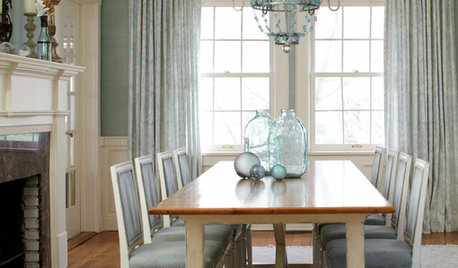
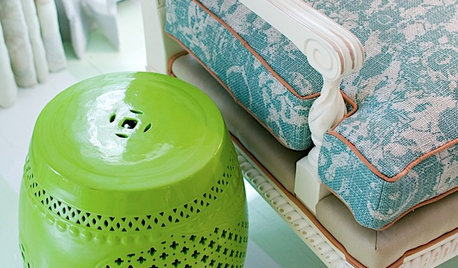
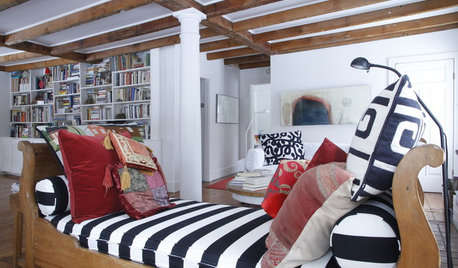
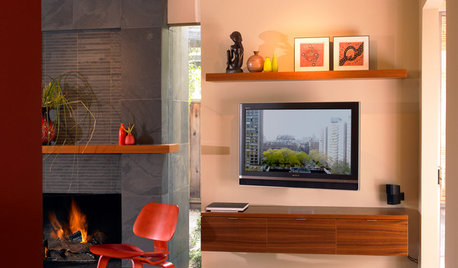
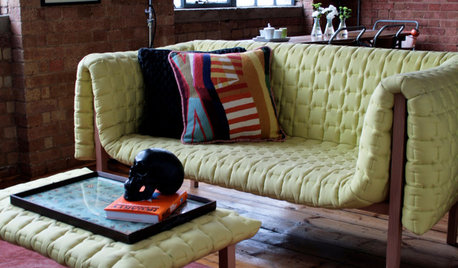









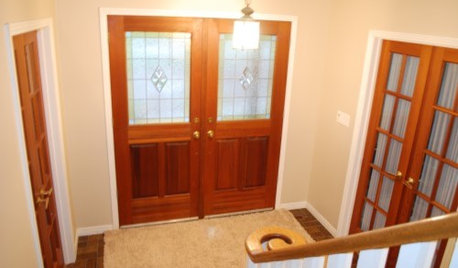
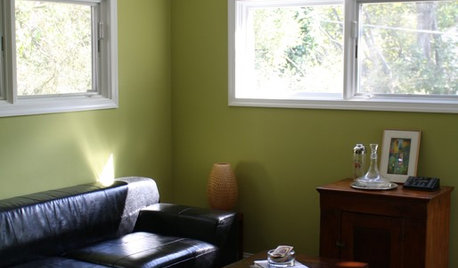
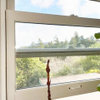




homestylelisaOriginal Author